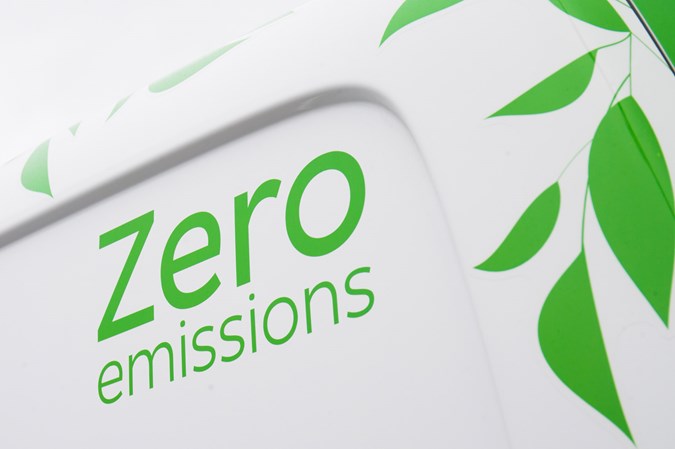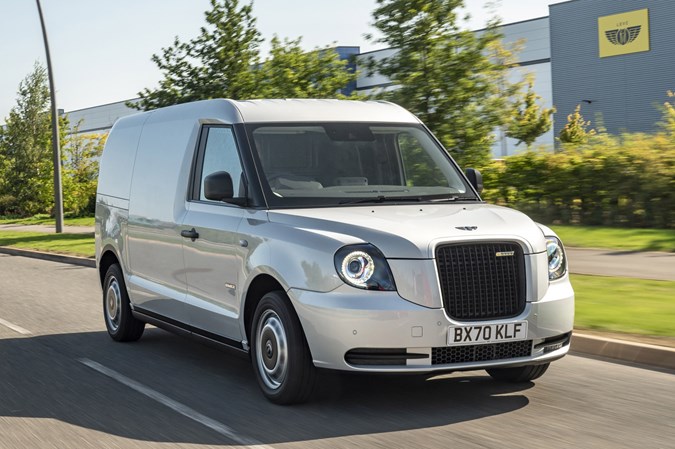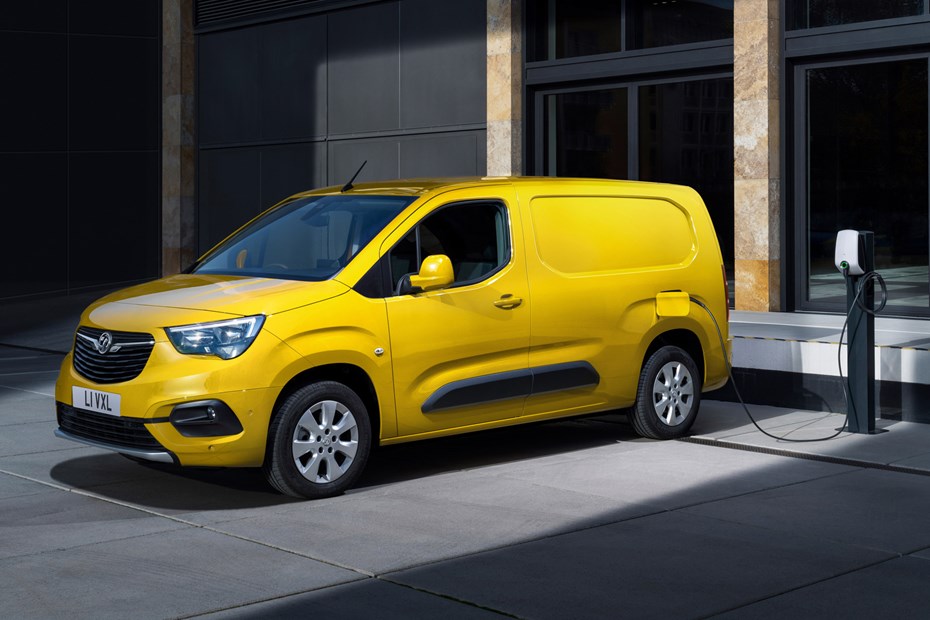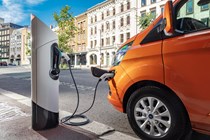The UK government confirmed in the 2024 Autumn Budget that the discount available on most electric vans through the Plug-in Van Grant (PIVG) incentive scheme has been extended into the 2025/2026 financial year.
This is to encourage more users to adopt electric commercial vehicles in the lead-up to the end of sales of all diesel and petrol-powered vans in 2035. An allocated £120 million will be available to cover the cost of the plug-in van discount scheme.
Which is at least some consolation for new electric van buyers, who also face paying vehicle excise duty (VED – also known as road tax) at the same rate as conventional vans from April 2025. This is due to van tax changes also introduced in the 2024 Budget.
Plug-in van grant to continue
Despite the sudden scrapping of the Plug-in Car Grant in 2022, van buyers are still able to get some assistance when it comes to making the step to electric.
Under the 2024/2025 electric van grant rules, the maximum saving for 3.5-tonne electric vans is £5,000, while the maximum reduction for smaller vans up to 2.5-tonnes is £2,500. In addition, there is a limit of 1,500 plug-in van and/or truck grants during this financial year.
The amounts you could claim were reduced in 2021 and are down from the previous £6,000 figure for large vans and £3,000 discount on small vans. Prior to this, all electrified vans up to 3.5 tonnes could save as much as £8,000 though the PIVG programme.

However, heavier electric vans such as those with 4.25-tonne ratings and ‘N2’ categorisation continue to qualify for the ‘small truck’ grant, which offers an incentive of up to £16,000 (capped at 20% of the purchase price).
It is of course worth stating that the discount is only applicable for new vans at the first point of purchase, so you can’t get a £5,000 saving on a used electric van.
There’s a full list of eligible vans further down this page.
Why has the government extended the Plug-in Van Grant?
Prior to the 2024/2025 extension, the Department for Transport (DfT) explained the government’s reasoning for extending the Plug-in Van Grant was to accelerate the growth in use of electric vans in the UK. It’s also an insurance against negative affects of oil price volatility.
The move is intended to accelerate take-up of of greener vans, and will help make the UK less reliant on imports of foreign oil, and reducing our vulnerability to fluctuations in global energy prices.
The grant isn’t having the dramatic impact that might be hoped, though, with electric vans not accounting for the desired proportion of sales. In the first half of 2024, electric-van sales were down versus the same period in 2023, making up less than 5% of the market.
What is the electric Plug-in Van Grant?
The PIVG is a government-funded discount for vans that can drive with zero emissions – which is to say using an electric motor instead of a conventional diesel or petrol engine. To qualify for the plug-in grant the electrified van must now meet the following standards:
- 60 miles or more of zero emissions driving range
- Less than 50g/km CO2 emissions (50gCO/km, as the DfT has it)
This is a change from the previous requirements, which were set at 75g/km CO2 and allowed hybrid vans to have a 10-mile zero-emissions range; pure electric vans were already required to have a 60-mile range to qualify for the subsidy.
How much is the electric van grant worth?
The PIVG is now split into two main grant rates for vans, divided by gross vehicle weight (GVW).
As of the 2024/25 financial year, these are discount amounts:
- Vans less than 2.5 tonnes: 35% of purchase price up to £2,500
- Vans 2.5-3.5 tonnes: 35% of the purchase price up to £5,000
Another new change is that the number of grants per tax year is now capped at 1,500 per customer. This applies to the end customer, and not leasing companies, but could impact large fleets, such as Amazon and DPD. The 1,500 number is a rise, though, as it was previously set at 1,000.
What about electric vans at 3.5-4.25 tonnes?
Heavier electric vans are a growing and potentially important part of the large electric van market, as a special derogation for alternative fuels means those up to 4.25t can be driven on a regular UK car licence in certain circumstances (the limit is 3.5t for diesel vans).
This concession remains in place for now, but the previous government had announced plans to scrap this, allowing all category B car-licence holders to be able to drive a 4.25-tonne electric van. This had not been enacted at the time of the 2024 general election so there is currently no date on when this will happen. It is anticipated that the new government will continue with this plan, though.

These heavyweight electric vans, which have a N2 classification rather than the lower N1 rating, qualify for the ‘small truck’ grant. This plug-in incentive applies to all commercial vehicles 3.5-12.0 tonnes, and is worth up to £16,000 (previously £20,000), capped at 20% of the purchase price.
So buyers of these bigger vans could still be quids in, though the subsidy for this category is limited to 250 grants per financial year, with only 10 available per customer. After these are gone you can apply for the grant at the £5,000 rate.
Which vans are eligible for the Plug-in Van Grant?
The government publishes a list of grant qualifying vans, but it’s worth bearing in mind that the list on the DfT website is not always kept totally up to date, as it sometimes features vans that are no longer on sale. In any case, be reassured that every 100% electric van sold in the UK meets the latest criteria for the PIVG.
Small electric vans (up to 2.5t) that qualify for the Plug-in Van Grant:
- Citroen e-Berlingo
- Fiat E-Doblo
- Maxus e Deliver 3 (short-wheelbase only)
- Mercedes-Benz eCitan
- Nissan Townstar
- Peugeot e-Partner
- Renault Kangoo E-Tech
- Toyota Proace City Electric
- Vauxhall Combo Electric
Large electric vans (2.5-3.5t) that qualify for the Plug-in Van Grant:
- Citroen e-Dispatch
- Citroen e-Relay
- DFSK EC35 (categorised as a large van due to its 2,600kg GVW)
- Fiat E-Ducato
- Fiat E-Scudo
- Ford E-Transit
- Ford E-Transit Custom
- Iveco eDaily
- LEVC VN5
- Maxus e Deliver 3 (long-wheelbase and chassis cab versions)
- Maxus eDeliver 7
- Maxus e Deliver 9
- Maxus T90EV
- Mercedes-Benz eVito
- Mercedes-Benz eSprinter
- Nissan Townstar (crew van and L2 versions)
- Peugeot e-Boxer
- Peugeot e-Expert
- Promod L City
- Renault Master E-Tech
- Toyota Proace Electric
- Vauxhall Vivaro Electric
- Volkswagen ID.Buzz Cargo
Do hybrid vans qualify for the Plug-in Van Grant?
There are currently only two proper hybrid commercial vehicles on sale in the UK: the Ford Transit Custom Plug-in Hybrid and LEVC VN5 panel vans.
The previously available Mitsubishi Outlander Commercial, which is a commercial 4x4, is no longer on sale.

All of these are plug-in hybrid electric vehicles (PHEVs), combining an electric motor with a petrol engine.
However only the LEVC VN5 (pictured above) has enough electric-only zero emissions capability (61 miles) to meet the latest PIVG requirements. The Transit Custom PHEV and the Outlander Commercial PHEV can only manage 35 miles and 28 miles of zero emissions, respectively.
The Toyota Corolla Commercial Hybrid van is not a plug-in hybrid, and will also not qualify for the PIVG.
Can you still get a discount on an electric vehicle charger?
Yes, but the eligible categories have now changed. You can now get assistance with the cost of a charger if you live in a flat or in a rented property. It has also been renamed the EV chargepoint grant.
Just so you know, we may receive a commission or other compensation from the links on this website - read why you should trust us.










